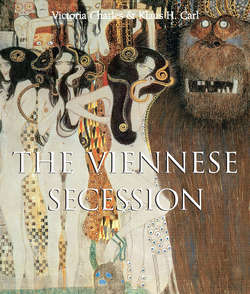Читать книгу The Viennese Secession - Victoria Charles - Страница 10
The Precursors of the Viennese Secession in Munich and Berlin
Berlin
ОглавлениеThe schism among the Berlin artists goes back to the year 1892, to the scandal surrounding the Norwegian artist Edvard Munch (1863–1944), who came out of artistic no man’s land that was Norway. Very early on, he was already able to garner a reputation in Germany and central Europe for being a revolutionary avant-garde artist. Today, his genius is recognised in all of Europe and beyond. His most famous works stem from the years around 1890, which he spent in Paris. In the fall of 1889, he organised a single exhibition of his work in Kristiana (present-day Oslo) which was so successful that he was granted a three-year artist’s stipend by the state.
During his time in Paris, he apprenticed with Léon Bonnat (1833–1922). However, it is not in his apprenticeship that he learned the most or found the most inspiration. It was the city itself and the life led by the resident artists that truly awed him. The scene was dominated by Symbolism, a simplified and stylised style that had grown out of the influences of Paul Gauguin and the French Synthetists around Émile Bernard. The essential premise of the movement can be summed up as: “Symbolism – Nature is formed by disposition”.
The results of his stay in Paris were the basis for the aforementioned exhibition in Kristiana. Apart from the state support, the exhibition also led to an invitation to Berlin, where all things Nordic were extremely popular at the time. Munch was invited to exhibit his work in the buildings of the oldest German association of artists, the Verein Berliner Künstler, founded in 1841. Since the president of the association maintained a close relation with the Imperial court, Munch may have hoped to find an influential sponsor in Berlin. Since Kaiser Wilhelm II (1859–1941) was quite vocal in matters of art and above all valued historical paintings; modern art or anything tending towards a more modern conception of art simply did not exist. This is quite evident when one considers that he commissioned 32 monumental and epic sculptures to be erected along the Siegesallee to honour and represent the history of Prussia. Consequently, he and other visitors of the exhibition were shocked and offended by Munch’s paintings. Some of the older and more established painters even took the paintings as anarchist provocation. Heated discussions ensued and the exhibition was subsequently closed. The scandal dominated the headlines of newspapers for weeks but proved to be excellent publicity for Munch.
The department that exhibited his paintings did not survive the scandal and the public disapproval for long – after a week it was closed. On top of that, other Norwegian painters retracted their works since they felt belittled by the enormous attention that their fellow countryman received. Munch’s fame, however, rose, to heights he was maybe not entirely comfortable with. He had many supporters among the younger artists, who soon started gathering similar-minded people and progressive authors like August Strindberg (1849–1912), the Polish author Stanislaw Przybyszewski (1868–1927) who wrote mainly in German, or art critic Julius Meier-Graefe (1867–1935) – one of Munch’s more outspoken advocates – around them.
This unusual group of friends met regularly in a pub called Zum Schwarzen Ferkel (The Black Piglet) and fittingly named itself “piglet’s circle”. Among this group was also Dagny Juel (1867–1901), the future wife of Przybyszewski, whom the other members lovingly called “Ducha”. However, her seductive appearance and animalistic allure did not only captivate Munch, but many other men as well. Ultimately, her presence led to friction and even arguments between the individual members which, interestingly, did not lead to a complete break-up but rather, combined with the scandal of Munch’s exhibition, to the foundation of the Berlin Secession.
Walter Leistikow, Aus dem Grunewald (From the Grunewald Forest), c. 1907.
Oil on canvas, 75 × 100 cm.
Staatliche Museen zu Berlin, Berlin.
Max Slevogt, Flowering Cherry Trees in Neukastel, 1898.
Oil on canvas, 70.2 × 100.6 cm.
Saarland Cultural Heritage Foundation, Saarlandmuseum, Saarbrücken.
Ludwig von Hofmann, Idyll, 1896.
Oil on linen canvas, 111.5 × 109 cm.
Sander Collection, Berlin.
